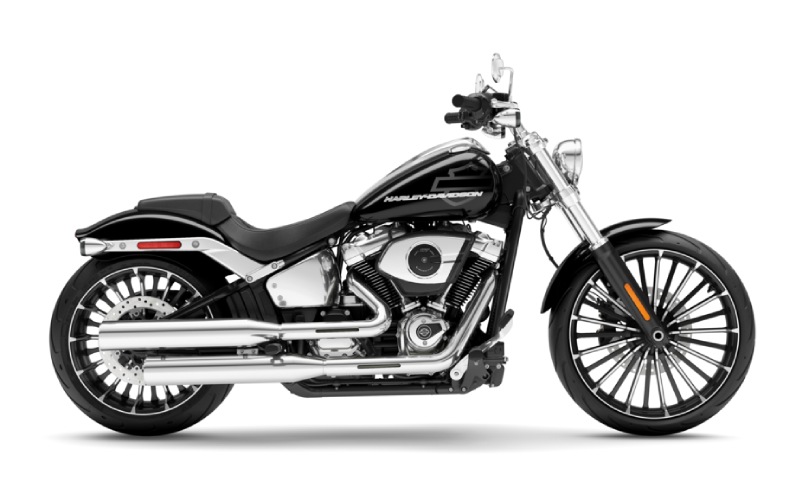How to Choose Between the 2025 Harley-Davidson® Breakout® and 2025 Harley-Davidson® Nightster® Special near Fort Washington, MD

Harley-Davidson® of Washington, DC - How to Choose Between the 2025 Harley-Davidson® Breakout® and 2025 Harley-Davidson® Nightster® Special near Fort Washington, MD
Riders comparing two modern legends often ask a simple question with a layered answer: Which bike is the better fit for how I ride, the 2025 Harley-Davidson® Breakout® or the 2025 Harley-Davidson® Nightster® Special? When the choices are a chopper-inspired cruiser and a tech-forward Sport machine, the nuances matter. This guide walks through core considerations to help you decide which profile matches your roads, your routine, and your preferences for ergonomics and tech—without sacrificing the Harley-Davidson® soul that unites them.
To frame the decision, consider your typical ride. Are you clocking relaxed miles on broad parkways, savoring big-twin torque and a wide rear tire’s steady footprint? Or are you navigating dense urban grids, favoring light steering, quick-revving power, and an instrument cluster that doubles as your command center? With those answers in mind, the strengths of each motorcycle become clearer, and you can align must-have features with the real-world demands of your commute and weekend escapes.
Frequently Asked Questions:
What should I prioritize if I want confident highway stability and striking style?
Lean toward a long-and-low cruiser with a big rear tire, a 21-inch front wheel, and a muscular Milwaukee-Eight® V-Twin. The combination yields unshakeable straight-line composure, visual drama, and a relaxed cadence at speed. If minimal bodywork and a classic analog-plus-digital gauge appeal to you, that’s a strong signal you’ll enjoy this platform’s feel and aesthetic.
How about riders who value agility and modern connectivity?
Look for a lighter package with a load-bearing engine, under-seat fuel tank, and a full-color TFT display. The result is easy lift off the side stand, quick transitions in traffic, and a cockpit that integrates Bluetooth® pairing for music, calls, and navigation. Add in selectable Ride Modes—like Road, Rain, and Sport—and you get immediate adaptation to changing conditions.
Can both styles support everyday commuting as well as weekend rides?
Absolutely. Each approach offers LED lighting, Rider Safety Enhancements, and a flexible riding position. Cruisers bring long-ride comfort and a sense of occasion, while modern Sport platforms reward active inputs and frequent stops with nimble confidence. Your priorities—torque-rich swagger versus quick-revving responsiveness—should drive the decision.
What are a few practical checks I can do before I decide?
Evaluate cockpit reach, seating comfort, and wind management. Confirm that the handlebar height and foot controls line up with your posture. Try toggling Ride Modes and exploring the instrument interface to see which display philosophy—analog-forward or full-color TFT—feels most natural to you. Finally, think about how often you ride with a passenger and whether a mini-fairing’s airflow benefits matter on your routes.
To make the evaluation even more concrete, run through the list below and circle your priorities. The more items you select from one column, the clearer your ideal match becomes.
- Highway presence: Prefer a stretched stance, big-twin torque, and dramatic wheel/tire proportions.
- Urban agility: Value low-speed balance, light steering, and centralized mass for quick maneuvers.
- Classic cockpit: Like an analog speedometer with a supplemental digital readout.
- Connected cockpit: Want a full-color TFT with Bluetooth® pairing and navigation options.
- Minimalist bodywork: Favor a clean silhouette without a fairing.
- Wind deflection: Appreciate a mini-fairing that shaves fatigue on longer rides.
- Solo stance: Mostly ride alone and prioritize a lean visual profile.
- Two-up ready: Want a standard passenger pillion and footpegs.
- Torque-first feel: Enjoy immediate roll-on power at low rpm.
- Rev-happy feel: Prefer an engine that spins up quickly with crisp response.
Next, think about your local terrain and weather patterns. If you regularly encounter slick mornings or seasonal downpours, selectable Ride Modes can be a real asset, smoothing throttle response and adjusting intervention thresholds. Riders who rack up freeway miles may lean into a chassis that feels planted and unflappable in crosswinds. City-centric riders will appreciate a platform that shrinks the bike around them at walking pace and threads through tight gaps.
Ergonomics also deserve deliberate attention. An upright position with easy-reach bars and mid-control feel can reduce fatigue when traffic demands frequent inputs. A long-and-low stance with forward reach suits riders who value a stretched posture and the visual theater of a chopper silhouette. Both approaches can be dialed for comfort, but their baseline character is intentionally distinct.
Finally, balance how you want the bike to make you feel, not just how it performs. Some riders are pulled to the timeless drama of a big-twin cruiser and the statement it makes at the curb. Others want the immediacy of a liquid-cooled V-Twin and a cockpit that mirrors modern tech habits. Both options are authentically Harley-Davidson®, and both reward commitment with miles of satisfaction.
Harley-Davidson® of Washington, DC offers expert guidance and model walkthroughs that help you connect the dots between spec sheets and real-world riding, serving Fredericksburg, VA, Hughesville, MD, and Fort Washington, MD. Our team is happy to talk through your priorities, from engine character and Ride Modes to display tech and ergonomics, so you can choose with confidence.


